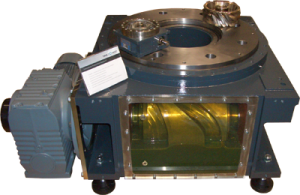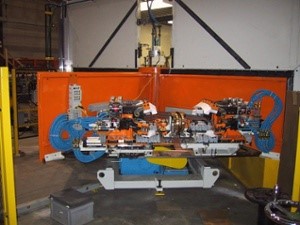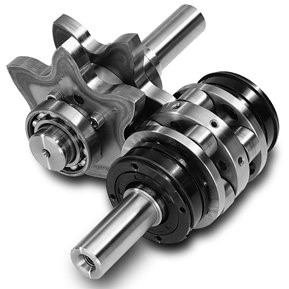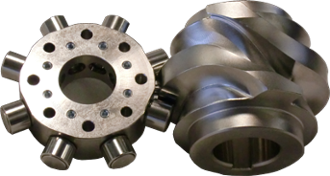Cam Indexers
No Comments - Leave a Comment
Cam-driven indexing operates on on a simple concept – translating a constant input into an intermittent output via the curvature of a cam. Various styles of cams, housing and outputs have been designed to accommodate applications both common and not.
Will your application require a particularly strong mechanical indexer? Extended dwell for high speed continuous operation? Parallel shaft output or a low profile? Below you can read about some of the benefits offered by the different cam configurations Motion Index Drives has to offer.
Barrel Cams

Barrel cams represent strength in indexing. Primarily found in rotary tables, indexers utilizing barrel cams feature the greatest strength/size offering available.
Depending on the application, a barrel cam can be modified to feature an extended dwell period and custom acceleration and deceleration profiles.
Barrel cams are used in conjunction with perpendicularly mounted cam followers, in the case of Motion’s applications a rotary dial output, although a barrel cam would also be used in applications such as a linear shuttle positioner.
RT Series Rotary Tables
TT Series Rotary Tables
TMF Series Programmable Rotary Tables
TSR Series Ring Indexers
Flat Cams
Flat, or disc, cams are valuable for their space-saving attributes and the potential to produce very long dwell periods and operate at high speed.
Motion’s parallel shaft indexers exclusively use flat cams. The extremely compact profile and range of possible motion profiles make parallel indexers exceptionally versatile.
Flat cams can also be found producing one or more of the motions in a multi-axis unit.
Globoidal Cams
Globoidal cams are similar to barrel cams in shape (and come from the same steel stock), but have considerably different profiles. Tapered walls in the grooves are designed to accommodate cam followers fixed to an output shaft in a “star” configuration.
The star configuration and globoidal cam result in significantly less internal inertia than a rotary table with a barrel cam. Globoidal indexers may produce the same rotary output as a table with a barrel cam, but the internal workings are significantly different.
Globoidal cams are ideal for fast-paced applications requiring a rotary output, and offer greater flexibility in cam customization than a barrel cam, but this configuration often sacrifices strength.
Explore the Possibility of Cam-Driven Automation for Your Next Project
Cam-driven indexing may suit your project better than you think. Contact us at 877-866-1677 and speak with one of Motion’s engineers about your application to find out what cam-driven indexing can do for you.
Comments
No Comments - Leave a Comment

 Translate
Translate

